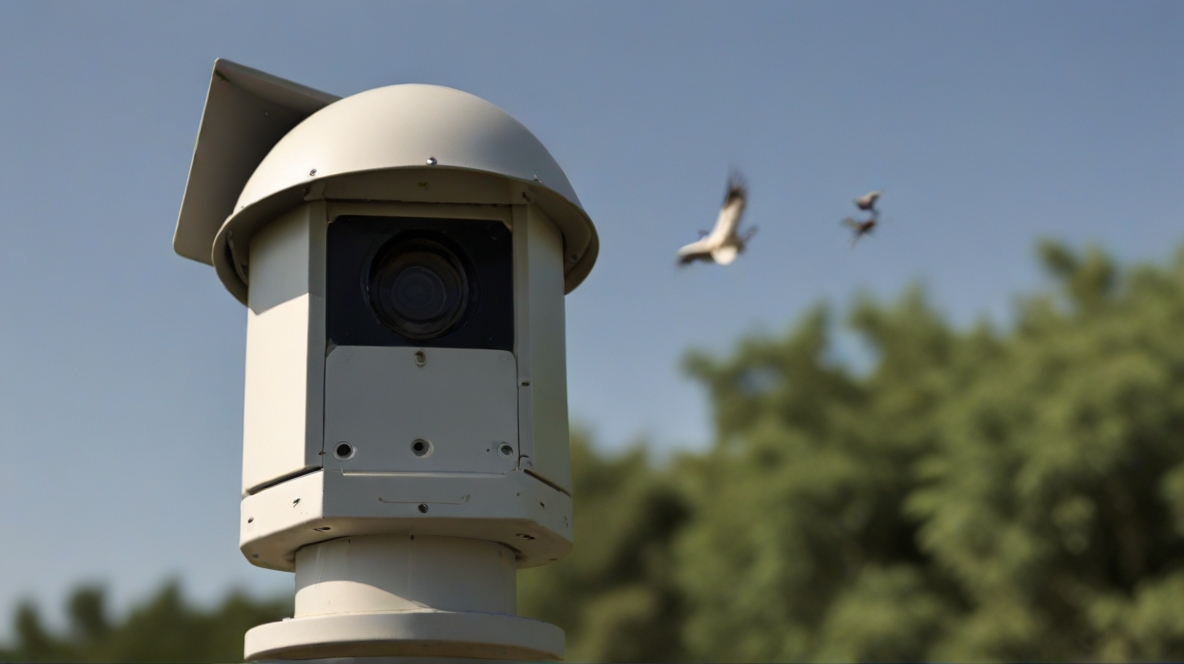Monitoring and tracking bird populations is crucial for various industries, including agriculture, aviation, and environmental conservation. Traditional bird surveillance methods, such as visual observation, radar systems, and acoustic monitoring, have their limitations in terms of accuracy, scalability, and environmental impact.
As technology advances, next-generation bird surveillance solutions are emerging, promising to revolutionize how we monitor and protect our feathered friends.
Current State of Bird Surveillance Technologies
Traditional Methods
Visual Observation and Manual Counting: This method involves trained individuals physically observing and counting birds in a specific area. While it can provide accurate data, it is labor-intensive, time-consuming, and limited in scope.
Radar Systems: Radar technology has been used to detect and track bird movements, particularly in aviation safety applications. However, radar systems can be expensive, and their accuracy can be affected by factors such as weather conditions and terrain.
Acoustic Monitoring: This method relies on recording and analyzing bird vocalizations to identify species and estimate population sizes. While effective in certain scenarios, acoustic monitoring can be challenging in noisy environments and may struggle to differentiate between similar-sounding species.
Advantages and Disadvantages
Each traditional method has its advantages and disadvantages. Visual observation and manual counting can provide detailed information but are labor-intensive and limited in scale. Radar systems offer wide-area coverage but can be costly and affected by environmental factors. Acoustic monitoring is non-invasive but may struggle with noise interference and species differentiation.
Emerging Next-generation Bird Surveillance Solutions
Artificial Intelligence and Machine Learning
Artificial Intelligence (AI) and Machine Learning (ML) algorithms are revolutionizing bird surveillance by enhancing detection, tracking, and identification capabilities. Computer vision and deep learning techniques can automate the process of identifying bird species from images or videos, significantly improving accuracy and efficiency.
One successful example of an AI-based bird surveillance project is the Merlin Bird ID app developed by Cornell University. This app uses machine learning to identify bird species from user-submitted photos, providing valuable data for researchers and bird enthusiasts alike.
Internet of Things (IoT) and Sensor Networks
IoT devices and sensor networks offer a distributed and scalable approach to bird surveillance. These systems can collect data from various sources, such as cameras, microphones, and environmental sensors, and integrate the information for comprehensive analysis.
The eBird project, a joint effort by Cornell University and the National Audubon Society, utilizes a network of citizen scientists and their mobile devices to crowdsource bird sightings and observations. This data is then used to monitor bird populations and distributions on a global scale.
Drone and Unmanned Aerial Vehicle (UAV) Technology
Drones and Unmanned Aerial Vehicles (UAVs) are becoming increasingly valuable tools for bird surveillance, particularly in hard-to-reach or remote areas. These aerial platforms can be equipped with cameras, sensors, and other monitoring equipment to gather data on bird populations and behaviors.
One example of successful drone-based bird surveillance is the use of UAVs by the U.S. Fish and Wildlife Service to monitor threatened and endangered bird species in remote areas, such as the Hawaiian Islands.
Remote Sensing and Satellite Imagery
Remote sensing technologies, such as satellite imagery and aerial photography, offer a birds-eye view of large areas, enabling continuous monitoring of bird populations and habitats.
These technologies can provide valuable data for conservation efforts and environmental impact assessments.
The National Audubon Society’s Survival by Degrees project utilizes remote sensing data, along with climate models, to predict the impact of climate change on bird species and their habitats, helping to inform conservation strategies.
Integrating Next-generation Solutions
While each of these next-generation technologies offers unique advantages, integrating multiple solutions can provide a more comprehensive and effective approach to bird surveillance.
For example, combining AI-powered image recognition with drone-based data collection and IoT sensor networks can provide a robust and scalable solution for monitoring bird populations across various landscapes.
One such integrated solution is the MOTUS Wildlife Tracking System, which combines a network of automated radio telemetry stations with machine learning algorithms to track the movements of small migratory birds across vast distances.
Integrating different technologies can present challenges, such as data interoperability and system complexity, but the potential benefits for bird conservation and environmental research make it a worthwhile endeavor.
Future Trends and Developments
The field of bird surveillance is constantly evolving, and future developments in technology promise even more advanced solutions. Some potential future trends include:
Quantum Computing and Advanced AI Algorithms
Quantum computing and advanced AI algorithms could further enhance bird detection, identification, and behavior analysis capabilities, enabling more accurate and real-time monitoring.
Nanotechnology and Miniaturized Sensors
Miniaturized sensors and nanotechnology could lead to the development of tiny, lightweight devices that can be attached to birds or integrated into their habitats, providing unprecedented insights into their behavior and movements.
5G and Beyond Wireless Communication Technologies
Faster and more reliable wireless communication technologies, such as 5G and beyond, could enable seamless data transfer and integration between various bird surveillance systems, enabling real-time monitoring and analysis.
Augmented Reality and Virtual Reality for Data Visualization
Augmented Reality (AR) and Virtual Reality (VR) technologies could revolutionize how bird surveillance data is visualized and analyzed, allowing researchers and conservationists to immerse themselves in virtual environments and gain deeper insights into bird populations and behaviors.
Ethical Considerations and Challenges
While next-generation bird surveillance solutions offer exciting opportunities, they also raise ethical considerations and challenges that must be addressed:
Privacy Concerns
The use of advanced surveillance technologies, such as drones and sensor networks, may raise privacy concerns, especially in urban or residential areas. Clear guidelines and regulations must be established to ensure responsible use of these technologies.
Environmental Impact
Some bird surveillance methods, such as drones or remote sensing, could potentially disrupt or disturb bird habitats or behaviors. Careful planning and mitigation strategies should be implemented to minimize environmental impact.
Responsible Use of AI and Automation
As AI and automation become more prevalent in bird surveillance, it is essential to ensure that these technologies are developed and deployed responsibly, with appropriate safeguards and oversight to prevent unintended consequences or biases.
Regulatory Frameworks
The rapid pace of technological advancement often outpaces the development of regulatory frameworks. Governments and relevant authorities must work to establish clear guidelines and regulations to govern the use of next-generation bird surveillance solutions, ensuring responsible and ethical practices.
Stakeholder Acceptance
Introducing new technologies and surveillance methods may face resistance or skepticism from various stakeholders, such as local communities, conservation groups, or industries affected by bird populations. Effective communication, education, and community engagement will be crucial for successful adoption and implementation.
Cost and Infrastructure Requirements
Implementing advanced bird surveillance solutions can be costly, requiring significant investments in hardware, software, and infrastructure. Funding mechanisms and cost-effective approaches must be explored to ensure these technologies are accessible to a wide range of organizations and regions.
Conclusion
Next-generation bird surveillance solutions offer unprecedented opportunities for monitoring and protecting our feathered friends. From AI-powered image recognition and drone-based data collection to IoT sensor networks and remote sensing technologies, these emerging solutions promise to revolutionize how we understand and conserve bird populations.
As we move forward, it is essential to address the ethical considerations and challenges surrounding these technologies, fostering responsible and sustainable practices that balance technological advancement with environmental stewardship and respect for privacy.



